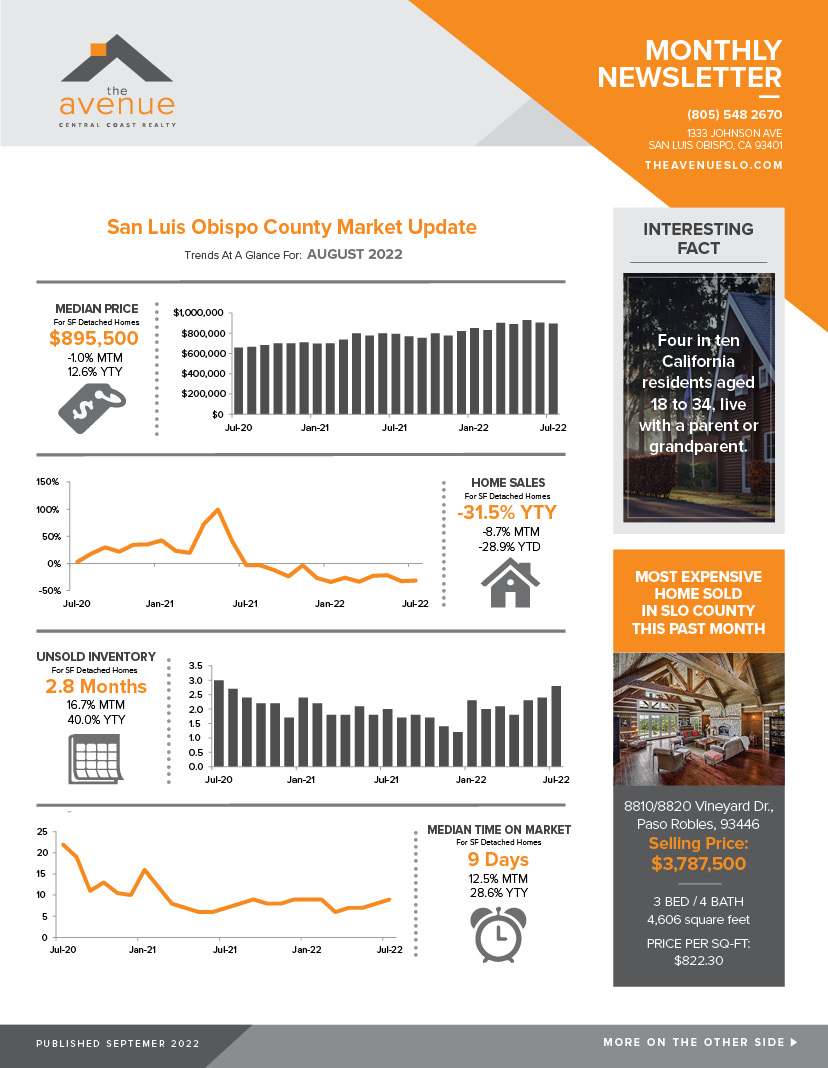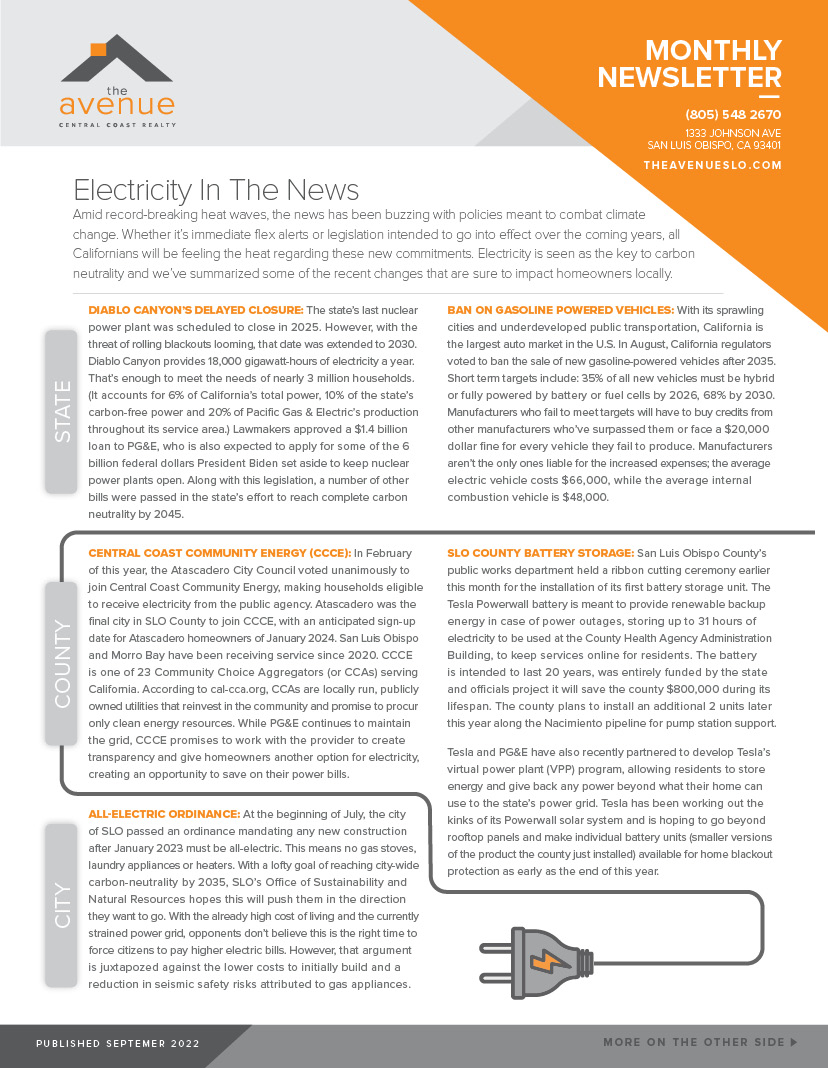SLO County Market Update / Electricity In The News
Amid record-breaking heat waves, the news has been buzzing with policies meant to combat climate change. Whether it’s immediate flex alerts or legislation intended to go into effect over the coming years, all Californians will be feeling the heat regarding these new commitments. Electricity is seen as the key to carbon neutrality and we’ve summarized some of the recent changes that are sure to impact homeowners locally.
STATE
Diablo Canyon’s Delayed Closure: The state’s last nuclear power plant was scheduled to close in 2025. However, with the threat of rolling blackouts looming, that date was extended to 2030. Diablo Canyon provides 18,000 gigawatt-hours of electricity a year. That’s enough to meet the needs of nearly 3 million households. (It accounts for 6% of California’s total power, 10% of the state’s carbon-free power and 20% of Pacific Gas & Electric’s production throughout its service area.) Lawmakers approved a $1.4 billion loan to PG&E, who is also expected to apply for some of the 6 billion federal dollars President Biden set aside to keep nuclear power plants open. Along with this legislation, a number of other bills were passed in the state’s effort to reach complete carbon neutrality by 2045.
Ban on Gasoline Powered Vehicles: With its sprawling cities and underdeveloped public transportation, California is the largest auto market in the U.S. In August, California regulators voted to ban the sale of new gasoline-powered vehicles after 2035. Short term targets include: 35% of all new vehicles must be hybrid or fully powered by battery or fuel cells by 2026, 68% by 2030. Manufacturers who fail to meet targets will have to buy credits from other manufacturers who’ve surpassed them or face a $20,000 dollar fine for every vehicle they fail to produce. Manufacturers aren’t the only ones liable for the increased expenses; the average electric vehicle costs $66,000, while the average internal combustion vehicle is $48,000.
COUNTY
Central Coast Community Energy (CCCE): In February of this year, the Atascadero City Council voted unanimously to join Central Coast Community Energy, making households eligible to receive electricity from the public agency. Atascadero was the final city in SLO County to join CCCE, with an anticipated sign-up date for Atascadero homeowners of January 2024. San Luis Obispo and Morro Bay have been receiving service since 2020. CCCE is one of 23 Community Choice Aggregators (or CCAs) serving California. According to cal-cca.org, CCAs are locally run, publicly owned utilities that reinvest in the community and promise to procur only clean energy resources. While PG&E continues to maintain the grid, CCCE promises to work with the provider to create transparency and give homeowners another option for electricity, creating an opportunity to save on their power bills.
SLO County Battery Storage: San Luis Obispo County’s public works department held a ribbon cutting ceremony earlier this month for the installation of its first battery storage unit. The Tesla Powerwall battery is meant to provide renewable backup energy in case of power outages, storing up to 31 hours of electricity to be used at the County Health Agency Administration Building, to keep services online for residents. The battery is intended to last 20 years, was entirely funded by the state and officials project it will save the county $800,000 during its lifespan. The county plans to install an additional 2 units later this year along the Nacimiento pipeline for pump station support.
Tesla and PG&E have also recently partnered to develop Tesla’s virtual power plant (VPP) program, allowing residents to store energy and give back any power beyond what their home can use to the state’s power grid. Tesla has been working out the kinks of its Powerwall solar system and is hoping to go beyond rooftop panels and make individual battery units (smaller versions of the product the county just installed) available for home blackout protection as early as the end of this year.
CITY
All-Electric Ordinance: At the beginning of July, the city of SLO passed an ordinance mandating any new construction after January 2023 must be all-electric. This means no gas stoves, laundry appliances or heaters. With a lofty goal of reaching city-wide carbon-neutrality by 2035, SLO’s Office of Sustainability and Natural Resources hopes this will push them in the direction they want to go. With the already high cost of living and the currently strained power grid, opponents don’t believe this is the right time to force citizens to pay higher electric bills. However, that argument is juxtapozed against the lower costs to initially build and a reduction in seismic safety risks attributed to gas appliances.
*Interesting Fact
Four in ten California residents aged 18 to 34, live with a parent or grandparent.




